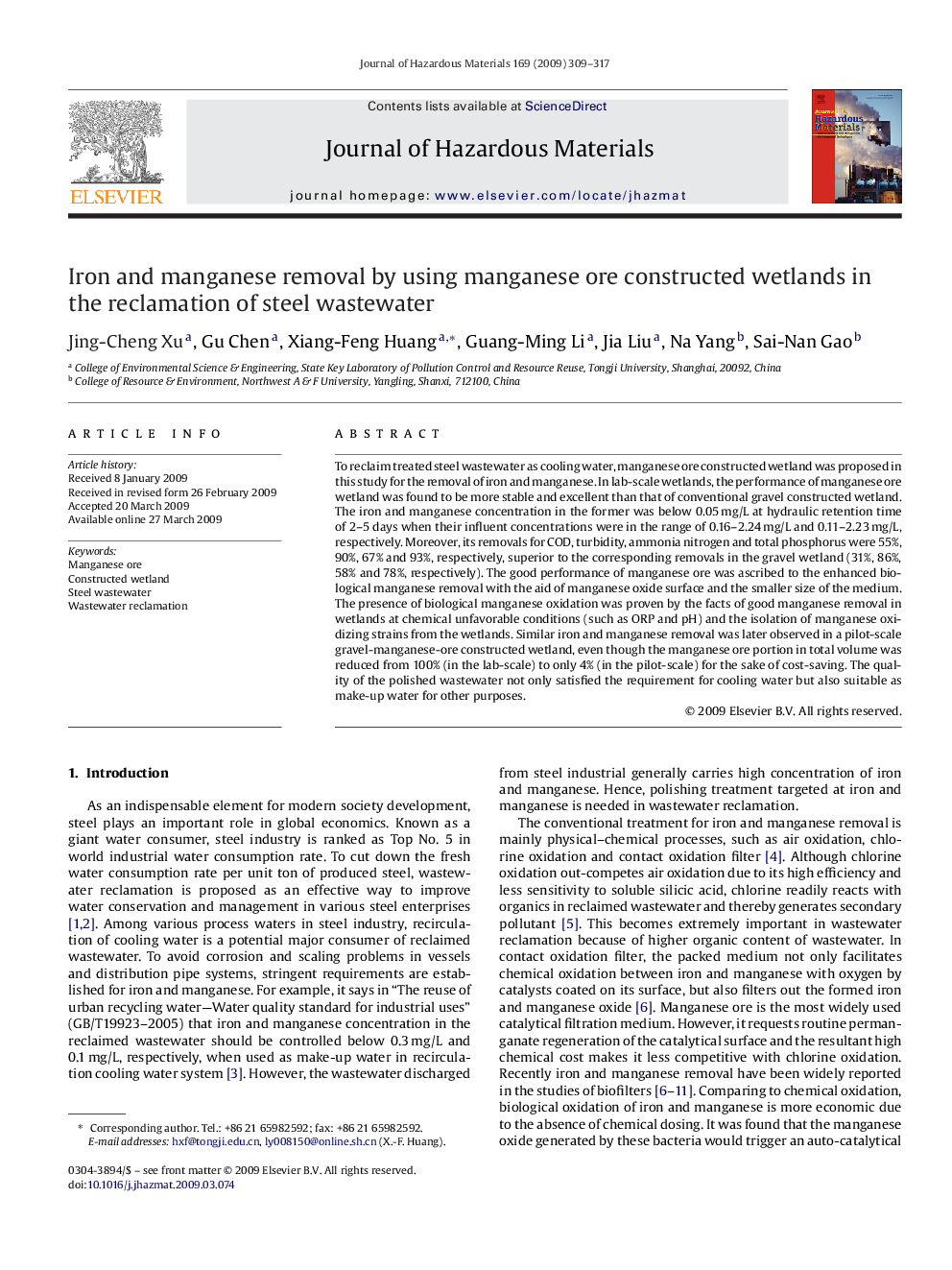| Article ID | Journal | Published Year | Pages | File Type |
|---|---|---|---|---|
| 581584 | Journal of Hazardous Materials | 2009 | 9 Pages |
Abstract
To reclaim treated steel wastewater as cooling water, manganese ore constructed wetland was proposed in this study for the removal of iron and manganese. In lab-scale wetlands, the performance of manganese ore wetland was found to be more stable and excellent than that of conventional gravel constructed wetland. The iron and manganese concentration in the former was below 0.05Â mg/L at hydraulic retention time of 2-5 days when their influent concentrations were in the range of 0.16-2.24Â mg/L and 0.11-2.23Â mg/L, respectively. Moreover, its removals for COD, turbidity, ammonia nitrogen and total phosphorus were 55%, 90%, 67% and 93%, respectively, superior to the corresponding removals in the gravel wetland (31%, 86%, 58% and 78%, respectively). The good performance of manganese ore was ascribed to the enhanced biological manganese removal with the aid of manganese oxide surface and the smaller size of the medium. The presence of biological manganese oxidation was proven by the facts of good manganese removal in wetlands at chemical unfavorable conditions (such as ORP and pH) and the isolation of manganese oxidizing strains from the wetlands. Similar iron and manganese removal was later observed in a pilot-scale gravel-manganese-ore constructed wetland, even though the manganese ore portion in total volume was reduced from 100% (in the lab-scale) to only 4% (in the pilot-scale) for the sake of cost-saving. The quality of the polished wastewater not only satisfied the requirement for cooling water but also suitable as make-up water for other purposes.
Related Topics
Physical Sciences and Engineering
Chemical Engineering
Chemical Health and Safety
Authors
Jing-Cheng Xu, Gu Chen, Xiang-Feng Huang, Guang-Ming Li, Jia Liu, Na Yang, Sai-Nan Gao,
